Shipping Container Windows
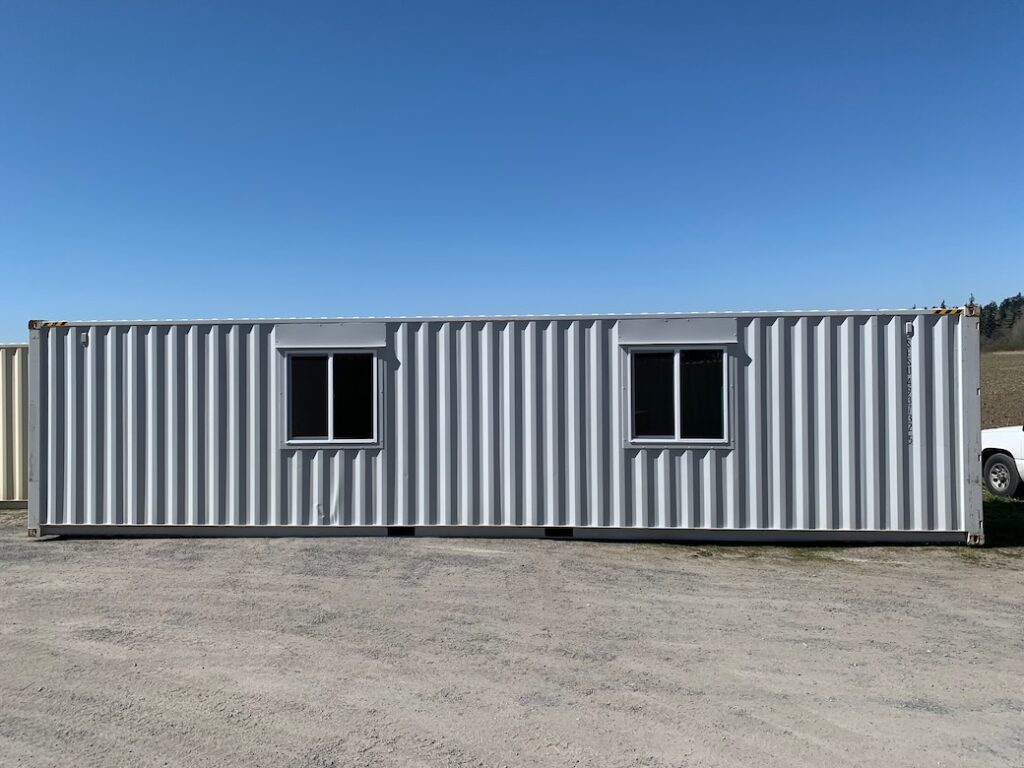
Shipping container windows are a common modification for repurposing portable storage into habitable spaces such as homes, offices, or retail establishments.


Sliding Windows
Used in mobile offices or work containers at construction sites.

Awning & Casement Windows
Used in habitation or rest spaces in containers converted into temporary or modular housing.

Fixed Windows
Used in warehouses and depots where regular access is required.
Key Features of Shipping Container Windows
Shipping container windows are typically made from durable materials such as aluminum or steel frames to withstand harsh environmental conditions
The window glass is often tempered for safety and may be tinted or coated to provide privacy, reduce glare, or improve energy efficiency.
The entire process, from order placement to installation, can typically range from 4 to 12 weeks, but this is just a general estimate and actual timelines may vary.
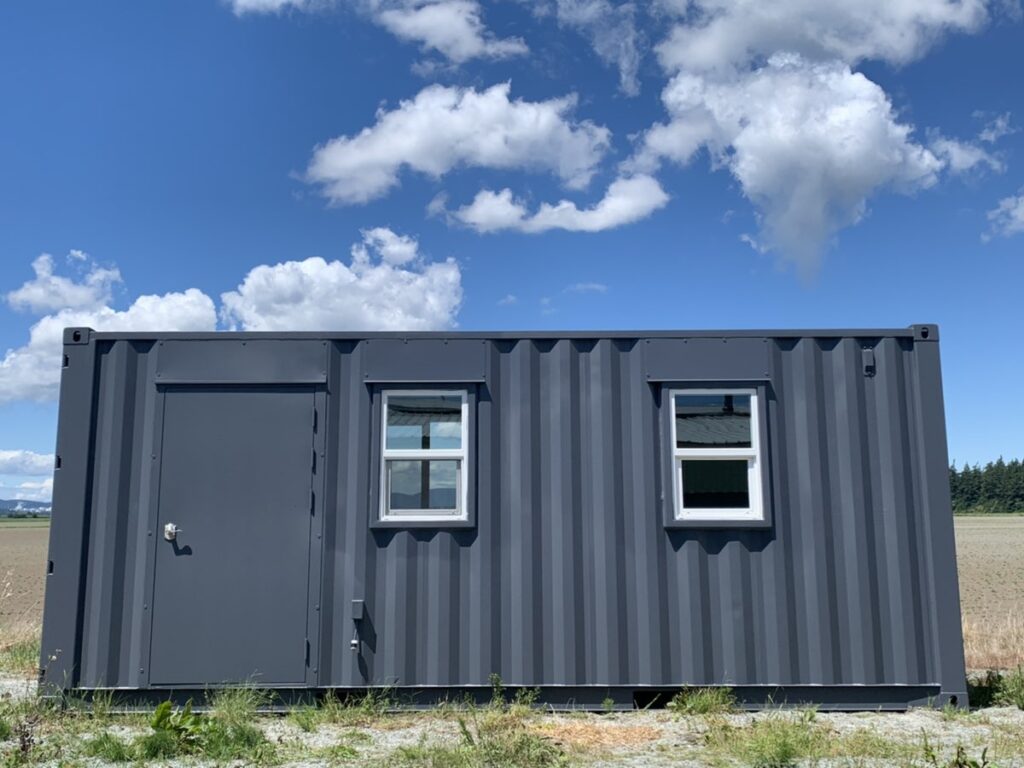
Your Next Steps to Add Shipping Container Windows
Call
Call or Visit to Discuss Window Options
Choose
Choose Your Window Type
Enjoy
Enjoy a Customized Container
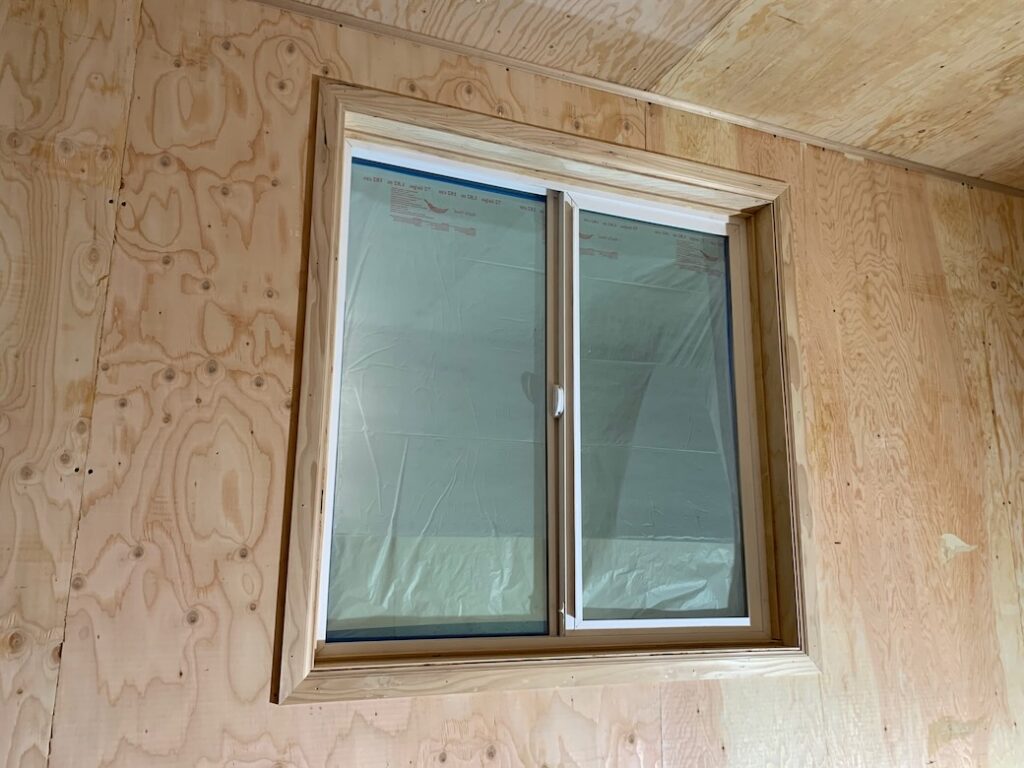
Container Window Reviews




Sliding Windows
These windows feature panels that slide horizontally to open and close. They are popular due to their simplicity and space-saving design.
Sliding window modification in a container refers to adjusting the size of the window used for analyzing data streams within the container. This modification typically depends on the specific context and requirements of the application. However, here’s a general outline of the process and the timeframe involved:
- Understand the current requirements and performance characteristics of the containerized application.
- Identify the need for adjusting the sliding window size based on factors such as data throughput, processing time, and resource constraints.
- Modify the configuration or code of the containerized application to adjust the sliding window size.
- Test the modified application in a controlled environment to ensure that the changes are functioning as expected.
- Conduct comprehensive testing to evaluate the impact of the sliding window modification on performance, throughput, and resource utilization.
- Fine-tune the sliding window size and other parameters based on testing results to achieve optimal performance.
- Deploy the modified containerized application into the production environment.
- Implement monitoring and alerting mechanisms to track the performance of the application and detect any anomalies or issues related to the sliding window modification.
- Continuously monitor the performance of the application in production and gather feedback from users and stakeholders.
- Iterate on the sliding window size and other configurations as needed to address any performance bottlenecks or changing requirements.
The cost of sliding windows for a container can vary widely based on several factors, including the size of the windows, the material used, the manufacturer or supplier, any additional features or customization, and the region where the windows are being purchased.
- Residential Conversions: Sliding windows are commonly used in container homes or residential conversions. They provide natural light, ventilation, and a connection to the outdoors, enhancing the livability of the space.
- Commercial Spaces: Containers are often repurposed for commercial use, such as cafes, offices, or retail shops. Sliding windows can create an inviting storefront, allowing for easy interaction with customers while maximizing space utilization.
- Recreational Spaces: Containers are also used for recreational purposes, such as pop-up bars, food stalls, or temporary event spaces. Sliding windows can be opened to create an open-air atmosphere during events and closed for security when not in use.
- Workshops or Studios: Sliding windows are suitable for containers converted into workshops, studios, or creative spaces. They provide ample natural light and can be opened to allow for ventilation while working.
- Mobile Businesses: Containers are often used for mobile businesses, such as food trucks or mobile offices. Sliding windows facilitate transactions, communication, and customer interaction while on the move.
- Space Efficiency: Sliding windows are space-efficient as they do not require additional clearance for opening like hinged windows. This is particularly advantageous in compact container spaces where maximizing usable area is essential.
- Ventilation: Sliding windows can be partially or fully opened to allow for ventilation, promoting airflow and comfort within the container. This is especially beneficial in warm or humid climates.
- Natural Light: Sliding windows maximize natural light penetration into the container, reducing the need for artificial lighting during the day. This creates a brighter, more inviting interior environment while also potentially reducing energy consumption.
- Aesthetics: Sliding windows offer a sleek and modern aesthetic that complements the industrial look of containers. They can enhance the overall appearance of the container conversion, making it more visually appealing.
- Security: Sliding windows can be equipped with secure locking mechanisms, providing peace of mind regarding the security of the container and its contents. Additionally, some sliding windows feature tempered or laminated glass for added security.
- Ease of Operation: Sliding windows are easy to operate, requiring minimal effort to open and close. This simplicity makes them suitable for various applications and user groups, including individuals with limited mobility.
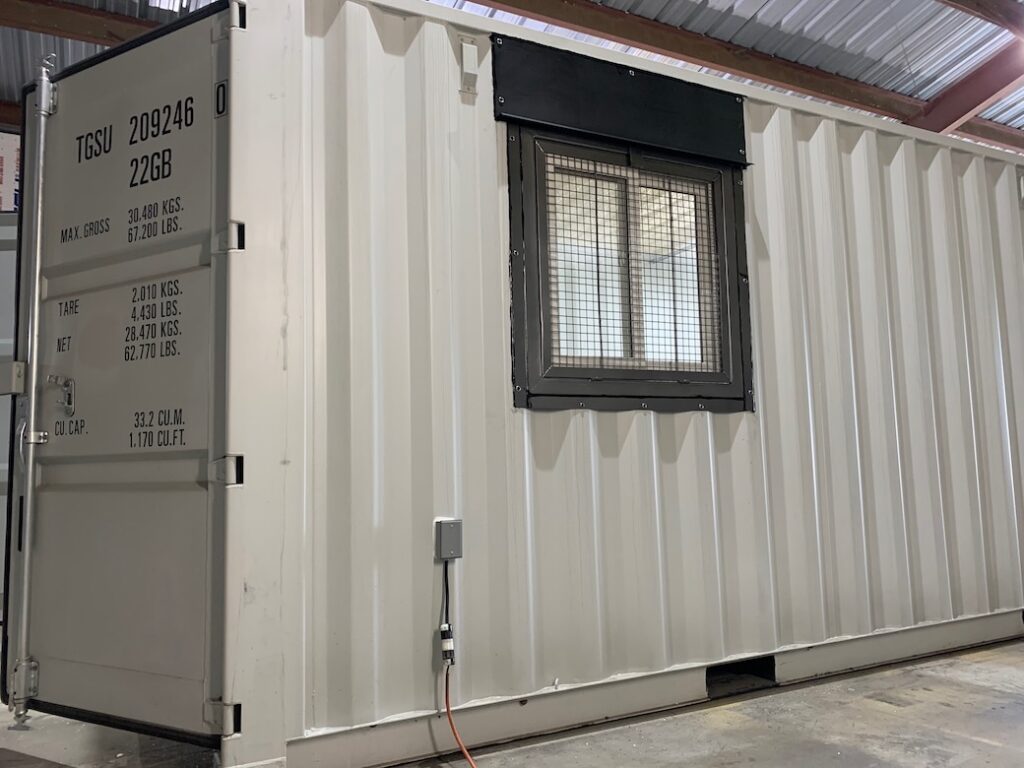
Awning & Casement Windows
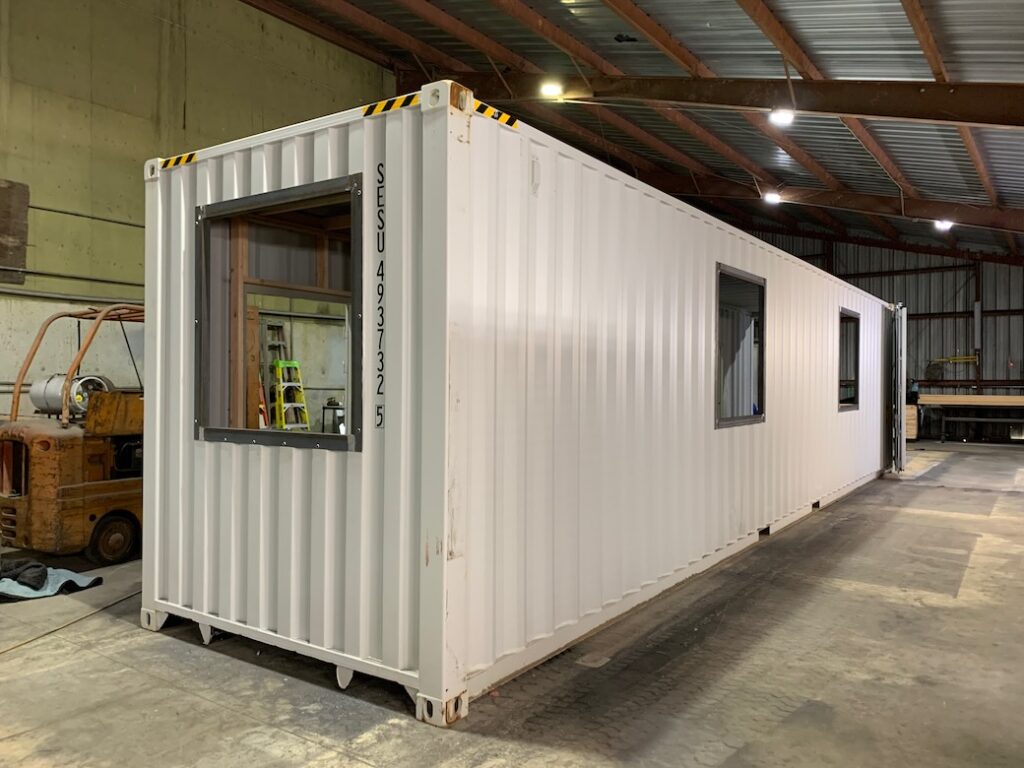
Awning windows are hinged at the top and open outward from the bottom, providing ventilation while keeping out rain.
- Casement windows are hinged on the side and swing outward like doors.
- They offer excellent ventilation and a clear view when fully opened.
Fixed Windows
Fixed windows do not open and are used primarily to allow natural light into the container. They are often combined with operable windows for ventilation.
Shipping container windows are typically made from durable materials such as aluminum or steel frames to withstand harsh environmental conditions.
The window glass is often tempered for safety and may be tinted or coated to provide privacy, reduce glare, or improve energy efficiency.
Installing windows in shipping containers involves cutting an appropriately sized opening in the container wall and securing the window frame in place.
Installation methods may include welding the frame directly to the container walls or using bolt-on frames for easier installation and removal.
Proper sealing and insulation around the window frame are essential to ensure weatherproofing and prevent water infiltration.
- Structural Integrity: Cutting openings in shipping container walls can compromise their structural integrity. Reinforcement may be necessary to maintain strength and stability.
- Weatherproofing: Adequate sealing and insulation are crucial to prevent water leakage, air infiltration, and condensation buildup inside the container.
- Security: Consider adding security features such as locking mechanisms, security bars, or shatter-resistant glass to protect against intruders.
- Ventilation: Choosing windows that can be opened for ventilation is essential to regulate temperature and air quality inside the container.
- Aesthetics: Window placement and design can significantly impact the appearance and functionality of the container space. Consider factors such as natural light, views, and interior layout when selecting window types and sizes.
- For a standard-sized fixed window in a container, you might expect to pay anywhere from $100 to $1500 or more per window, including both the cost of the window itself and the installation.
- Natural Lighting: Fixed windows are excellent for allowing natural light to enter the container space, creating a bright and inviting interior environment. This makes them ideal for use in living spaces, offices, studios, and other areas where ample daylight is desired.
- Aesthetic Appeal: Fixed windows can enhance the aesthetic appeal of container structures, adding a modern and sleek look to the exterior. They can be strategically placed to improve the overall design and visual appeal of the container.
- Viewing and Ventilation: While fixed windows don’t open, they can still provide views of the surroundings, making them suitable for areas where occupants want to enjoy the scenery. They can also be combined with other window types or ventilation systems to facilitate airflow within the container.
- Privacy Screens: Fixed windows can be positioned higher on the walls to provide privacy while still allowing natural light to filter into the space. This is especially useful in areas where privacy is needed but daylight is still desired.
- Architectural Features: Fixed windows can serve as architectural features in container projects, helping to break up large expanses of solid walls and adding visual interest to the structure.
- Cost-Effective: Fixed windows are often more affordable than operable windows (such as casement or sliding windows) since they don’t require complex hardware for opening and closing mechanisms.
- Low Maintenance: Since fixed windows don’t have moving parts, they are generally low maintenance compared to operable windows. This can result in long-term cost savings and reduced upkeep requirements.
- Improved Insulation: Fixed windows can contribute to the overall insulation of the container, helping to regulate indoor temperatures and reduce energy costs. When properly sealed and installed, they can minimize heat loss or gain through the windows.
- Structural Integrity: Fixed windows can enhance the structural integrity of container modifications by reinforcing the walls and preventing potential distortions or weaknesses that may occur with larger cutouts for operable windows.
- Security: While fixed windows don’t open, they still provide natural light and views without compromising security. When combined with other security measures such as locks and alarms, they can help enhance the safety of the container space.
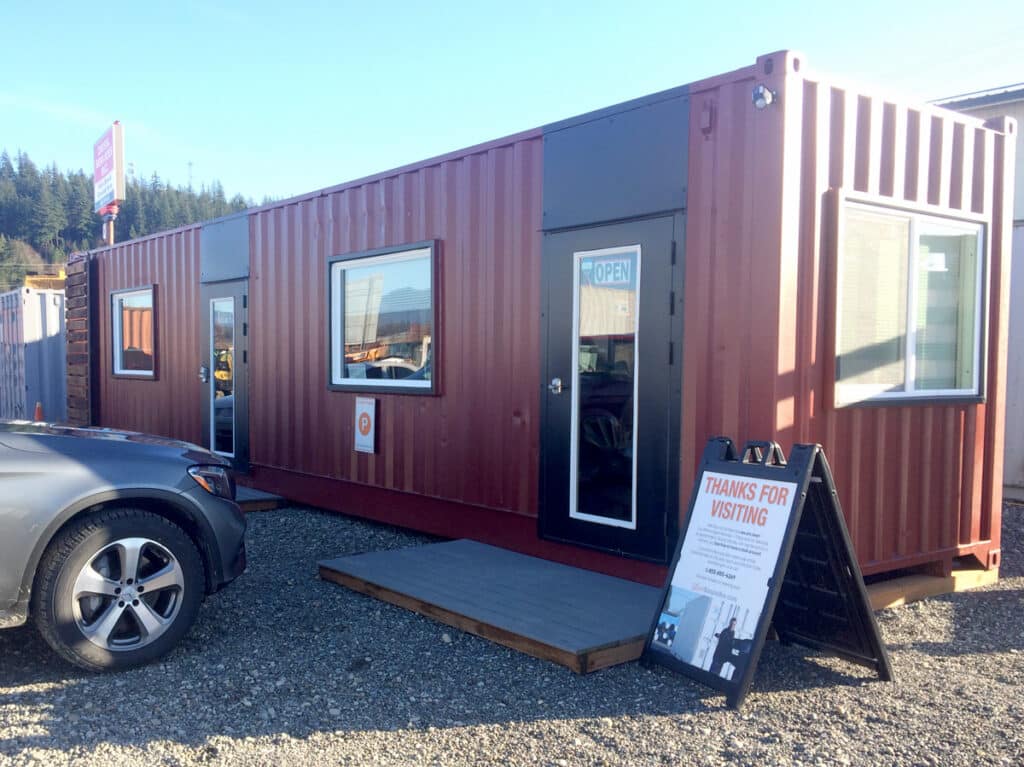
Ready to Explore More Container Modifications?

We’ll treat you like we’d want to be treated.
- No pushy sales techniques
- No out-of-state contractors
- No cussing or crudeness
- Helpful service offered with a smile
We focus on being local, professional, and kind. If at any point you have questions or concerns, a local manager is standing by and ready to help within 1 business day.
Get Container Modification Prices
We're looking forward to helping you get a Modified Shipping container. Fill out the form and we'll reply quickly with a no-pressure estimate.
"*" indicates required fields
Frequently Asked Questions
Common types of windows installed in shipping containers include sliding windows, awning windows, casement windows, and fixed windows.
Standard sizes for shipping container windows vary, but common dimensions range from around 2 feet by 2 feet (0.6 meters by 0.6 meters) to 4 feet by 4 feet (1.2 meters by 1.2 meters).
Yes, shipping container windows can be customized to fit specific dimensions based on the container’s requirements and the owner’s preferences.
Shipping container windows are designed to be weatherproof and are typically made from durable materials such as aluminum or steel frames with tempered glass to withstand harsh environmental conditions.
Shipping container windows can be installed by cutting an appropriate-sized opening in the container wall and securing the window frame using welding or bolting methods. Proper sealing and insulation are then applied to ensure weather resistance.
Yes, many types of shipping container windows are designed to be opened for ventilation, such as sliding windows and casement windows, allowing for airflow and temperature control inside the container.
Yes, security features such as locking mechanisms and security bars can be added to shipping container windows to enhance security and deter unauthorized access.
Yes, shipping container windows can be tinted to provide privacy, reduce glare, and protect against UV radiation. Tinting options include frosted glass or applying window films.
Regular maintenance for shipping container windows involves cleaning the glass and frames, inspecting seals for damage or wear, and ensuring that opening mechanisms operate smoothly.
Yes, shipping container windows can be retrofitted into existing containers as part of a modification process. However, it’s essential to consult with professionals to ensure proper installation and structural integrity.